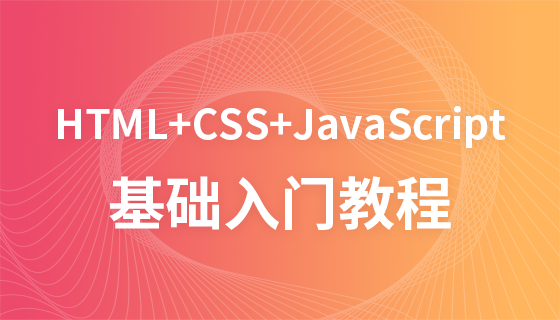
Go语言的接口(Interface)是一种强大的抽象机制,它通过隐式实现来定义行为契约。任何类型只要实现了一个接口定义的所有方法,就被认为实现了该接口。然而,Go语言对方法签名的匹配要求是极其严格的,这包括方法名、参数类型和返回类型都必须完全一致。当接口的方法参数本身就是该接口类型时,这一严格性尤其需要注意。
考虑一个场景,我们正在构建一个斐波那契堆,其中需要一个通用的节点类型。我们定义了一个 Node 接口,它包含 AddChild 和 Less 两个方法,这两个方法的参数类型都引用了 Node 接口自身:
// node/node.go
package node
type Node interface {
AddChild(other Node)
Less(other Node) bool
}
// NodeList 只是一个示例,用于演示如何使用Node接口
type NodeList []Node
func (n *NodeList) AddNode(a Node) {
*n = append(*n, a)
}现在,我们尝试创建一个具体类型 Element 来实现 Node 接口。Element 包含一个 Value 和一个 Children 列表:
// main.go
package main
import (
"container/list"
"fmt"
node "./node" // 假设node包在当前目录下
)
type Element struct {
Children *list.List
Value int
}
// 尝试实现 Node 接口的方法 (错误示范)
func (e Element) AddChild(f Element) { // 注意:参数类型是 Element
e.Children.PushBack(f)
}
func (e Element) Less(f Element) bool { // 注意:参数类型是 Element
return e.Value < f.Value
}
func main() {
a := Element{list.New(), 1}
b := Element{list.New(), 2}
var nodeList node.NodeList
// 编译错误发生在这里
// nodeList.AddNode(a) // 这行代码在尝试传入a时就会报错
fmt.Println(a, b) // 仅为避免未使用变量错误
}当我们尝试编译上述代码时,Go编译器会报错:
立即学习“go语言免费学习笔记(深入)”;
cannot use a (type Element) as type node.Node in function argument:
Element does not implement node.Node (wrong type for AddChild method)
have AddChild(Element)
want AddChild(node.Node)这个错误清晰地指出了问题所在:Element 类型的 AddChild 方法签名是 AddChild(f Element),而 node.Node 接口要求的签名是 AddChild(other Node)。尽管 Element 实现了 Node 接口,但 Element 作为参数类型与 Node 接口类型是不同的。
Go语言之所以如此严格,是为了维护接口的多态性和类型安全。如果允许 AddChild(Element) 匹配 AddChild(node.Node),将会导致类型系统的不一致。
设想以下情况,如果编译器允许上述错误实现通过:
// 假设 Element 的 AddChild(f Element) 能够实现 Node 的 AddChild(other Node)
var n node.Node // n 是一个 Node 接口类型变量
n = Element{list.New(), 1} // 将 Element 赋值给 Node 接口变量
type Other int // 另一个实现了 Node 接口的类型
func (o Other) Less(f node.Node) bool { /* ... */ return true }
func (o Other) AddChild(f node.Node) { /* ... */ }
var o Other = 10
// 现在,如果 Element 的 AddChild 接受 Element 作为参数,
// 那么通过 Node 接口调用时,传入 Other 类型就会出现问题:
// n.AddChild(o) // 这里会尝试将 Other 类型传递给 Element.AddChild(Element)当我们将一个 Element 实例赋值给 node.Node 接口类型的变量 n 后,我们期望能够通过 n 调用 AddChild 方法,并传入任何实现了 node.Node 接口的类型作为参数,例如 Other。但如果 Element 的 AddChild 方法只接受 Element 类型,那么在运行时,将 Other 传递给 n.AddChild(o) 就会导致类型不匹配,从而破坏了接口的多态性。
因此,Go编译器强制要求,实现接口的方法签名必须与接口定义的方法签名完全一致,包括参数类型。
要正确实现 node.Node 接口,Element 类型的方法签名必须与接口定义完全匹配。这意味着 AddChild 和 Less 方法的参数都必须是 node.Node 类型。
// main.go (修正后的 Element 实现)
package main
import (
"container/list"
"fmt"
node "./node" // 假设node包在当前目录下
)
type Element struct {
Children *list.List
Value int
}
// 正确实现 Node 接口的方法
func (e *Element) AddChild(f node.Node) { // 参数类型是 node.Node
// 在这里,f 是一个 node.Node 接口类型。
// 如果我们需要访问 f 的具体类型(如 Element)的字段或方法,需要进行类型断言。
if childElem, ok := f.(*Element); ok {
// 成功断言为 *Element 类型,可以安全地操作
e.Children.PushBack(childElem)
} else {
// 如果传入的不是 *Element 类型,则需要根据业务逻辑处理
// 例如,可以 panic,返回错误,或者进行其他默认处理
panic(fmt.Sprintf("AddChild: received a non-*Element Node type: %T", f))
}
}
func (e *Element) Less(f node.Node) bool { // 参数类型是 node.Node
// 同样,需要对 f 进行类型断言才能比较其 Value
if otherElem, ok := f.(*Element); ok {
return e.Value < otherElem.Value
}
// 如果无法断言,说明无法进行有意义的比较,需要处理
panic(fmt.Sprintf("Less: received a non-*Element Node type for comparison: %T", f))
}
func main() {
a := &Element{list.New(), 1} // 使用指针类型实现方法,以便修改接收者
b := &Element{list.New(), 2}
c := &Element{list.New(), 3}
var nodeList node.NodeList
// 现在可以成功将 Element 实例添加到 NodeList 中
nodeList.AddNode(a)
nodeList.AddNode(b)
a.AddChild(c) // a 的 AddChild 方法现在可以接受任何 Node 类型的参数
fmt.Printf("Element a's children count: %d\n", a.Children.Len())
fmt.Printf("Is a less than b? %t\n", a.Less(b))
fmt.Printf("Is b less than a? %t\n", b.Less(a))
// 尝试传入一个非 *Element 类型的 Node (如果存在)
// 例如,定义一个 OtherNode 类型也实现了 node.Node 接口
type OtherNode int
func (o OtherNode) AddChild(f node.Node) { fmt.Println("OtherNode AddChild called") }
func (o OtherNode) Less(f node.Node) bool { return false }
var otherNode OtherNode = 100
// a.AddChild(otherNode) // 这会触发 AddChild 中的 panic
}*关于接收者类型 (e Element vs `e Element):** 在上面的修正代码中,我将Element的接收者类型改为了指针*Element。这是因为AddChild方法需要修改e.Children列表,而 Go 语言是值传递,如果使用值接收者e Element,那么e.Children.PushBack(childElem)只是修改了e的一个副本,不会影响原始Element` 实例。对于需要修改接收者状态的方法,通常应使用指针接收者。
当接口方法接收 node.Node 类型的参数时,实际传入的可能是一个 *Element,也可能是其他实现了 node.Node 接口的类型。如果我们的方法逻辑需要访问具体类型(例如 Element)的特有字段(如 Value)或方法,就必须使用类型断言来安全地转换接口值到具体类型。
// 示例:类型断言
if concreteType, ok := interfaceVar.(ConcreteType); ok {
// 成功断言,concreteType 现在是 ConcreteType 类型
// 可以安全地访问其字段和方法
} else {
// 断言失败,interfaceVar 不是 ConcreteType 类型
// 需要根据业务逻辑处理,例如:
// panic("传入的不是期望的类型")
// return false // 或返回错误
}在 AddChild 和 Less 方法中,我们使用了 if childElem, ok := f.(*Element); ok 这样的模式。如果断言成功,childElem 将是 *Element 类型,我们可以安全地对其进行操作。如果断言失败(即 f 不是 *Element 类型),则 ok 为 false。在这种情况下,我们必须决定如何处理:
在教程示例中,我们选择了 panic,因为它简单直接地展示了当类型不匹配时程序会中断。在实际生产代码中,应根据具体情况选择最合适的错误处理策略。
为了更好地理解,以下是一个完整的示例,包括 node 包和 main 包:
// node/node.go
package node
type Node interface {
AddChild(other Node)
Less(other Node) bool
}
type NodeList []Node
func (n *NodeList) AddNode(a Node) {
*n = append(*n, a)
}// main.go
package main
import (
"container/list"
"fmt"
"log"
node "./node" // 假设node包在当前目录下
)
type Element struct {
Children *list.List
Value int
}
// 正确实现 Node 接口的方法
// 使用指针接收者,因为 AddChild 会修改 Element 的 Children 字段
func (e *Element) AddChild(f node.Node) {
if childElem, ok := f.(*Element); ok {
e.Children.PushBack(childElem)
} else {
log.Printf("Warning: AddChild received a non-*Element Node type: %T. Not added.\n", f)
// 或者 panic(fmt.Sprintf("AddChild: received a non-*Element Node type: %T", f))
}
}
// 使用指针接收者,因为 Less 方法可能需要访问接收者的字段
func (e *Element) Less(f node.Node) bool {
if otherElem, ok := f.(*Element); ok {
return e.Value < otherElem.Value
}
log.Printf("Warning: Less received a non-*Element Node type for comparison: %T. Returning false.\n", f)
return false // 无法比较时返回默认值
// 或者 panic(fmt.Sprintf("Less: received a non-*Element Node type for comparison: %T", f))
}
func main() {
a := &Element{list.New(), 1}
b := &Element{list.New(), 2}
c := &Element{list.New(), 3}
var nodeList node.NodeList
nodeList.AddNode(a)
nodeList.AddNode(b)
fmt.Printf("Initial elements in NodeList: %v\n", nodeList)
a.AddChild(c) // a 的 AddChild 方法现在可以接受任何 Node 类型的参数
fmt.Printf("Element a's children count: %d\n", a.Children.Len())
fmt.Printf("Is a less than b? %t\n", a.Less(b))
fmt.Printf("Is b less than a? %t\n", b.Less(a))
// 示例:一个不同的 Node 实现
type OtherNode struct {
ID int
}
func (o *OtherNode) AddChild(f node.Node) { fmt.Printf("OtherNode %d AddChild called with %T\n", o.ID, f) }
func (o *OtherNode) Less(f node.Node) bool {
if other, ok := f.(*OtherNode); ok {
return o.ID < other.ID
}
return false // 无法比较
}
other := &OtherNode{ID: 100}
nodeList.AddNode(other) // 可以将 OtherNode 也添加到 NodeList 中
fmt.Printf("NodeList after adding OtherNode: %v\n", nodeList)
// 尝试将 OtherNode 添加为 Element 的子节点
a.AddChild(other) // 这会触发 Element.AddChild 中的日志警告
fmt.Printf("Element a's children count after adding OtherNode: %d\n", a.Children.Len())
// 尝试用 OtherNode 与 Element 比较
fmt.Printf("Is a less than other? %t\n", a.Less(other)) // 这会触发 Element.Less 中的日志警告
}Go 语言对接口方法签名的严格匹配是其类型安全和多态性的基石。当接口方法参数引用接口自身时,实现者必须精确匹配接口中定义的参数类型(即接口类型本身),而非实现该接口的具体类型。在方法内部,若需访问具体类型的特有属性或行为,应使用类型断言,并妥善处理断言失败的场景。理解并遵循这些原则,是编写健壮、可维护的 Go 接口代码的关键。
以上就是深入理解Go语言接口的自引用与方法签名匹配的详细内容,更多请关注php中文网其它相关文章!

每个人都需要一台速度更快、更稳定的 PC。随着时间的推移,垃圾文件、旧注册表数据和不必要的后台进程会占用资源并降低性能。幸运的是,许多工具可以让 Windows 保持平稳运行。




Copyright 2014-2025 https://www.php.cn/ All Rights Reserved | php.cn | 湘ICP备2023035733号